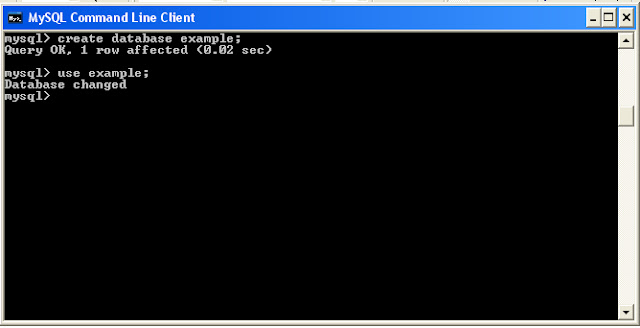JSP- Insert Query.
Problem:
Using insert Query, to insert the data to table using jsp and mysql.
We follow some steps to connect jsp with mysql database.
1). Load the Driver
Class.forName(“com.mysql.jdbc.Driver”);
This statement load the mysql Driver.
2). Create the Connection
String s=”jdbc:mysql://localhost/Database_Name”,”username”,”password”
Connection con=DriverManager.getConnection(s);
3). Create Statement
Statement stmt=con.createStatement();
String sql=”insert into table_name values(‘suresh’,’kumar’);
Stmt.executeUpdate(sql);
Requirements:
Netbean 6.8
Mysql 6.0
Knowledge from mysql.
Procedure:
Open mysql 6.0
Step 1:
Create DataBase named as example.
How to Create Database
Mysql > create database example;
Successfully database is created.
Step 2:
Use database.
How to activate example database?
Mysql > use example;
Step 3:
create table named exam.
Mysql > create table exam(student_name varchar(40),rollno varchar(20));
Step 4:
Create jsp file name as InsertExample
Include following coding into InsertExample
< %@page contentType="text/html" pageEncoding="UTF-8"% >
< !DOCTYPE HTML PUBLIC "-//W3C//DTD HTML 4.01 Transitional//EN"
http://www.w3.org/TR/html4/loose.dtd >
< %@page import="java.sql.*" % >
< html >
< head >
< title > Java DataBase Connectivity-Insert Example < /title >
< /head >
< body >
< %!
Connection con=null;
ResultSet rs=null;
Statement stmt=null;
% >
< %
try
{
Class.forName("com.mysql.jdbc.Driver");
}
catch(Exception e)
{
out.println(e.getMessage());
}
try
{
con=DriverManager.getConnection("jdbc:mysql://localhost/example","root","sure");
stmt=con.createStatement();
int i=stmt.executeUpdate("insert into exam values('sureshkumar','2k2ccs37')");
if(i==1)
{
out.println("Successfully Inserted");
}
else
{
out.println("Error For Inserted");
}
}
catch(Exception e)
{
out.println(e.getMessage());
}
finally
{
con.close();
stmt.close();
}
% >
< /body >
< /html >
Step 5:
Download mysql-connector-java-5.1.6-bin.jar; |
Extract mysql-connector-java-5.1.6-bin.jar zip file. |
Import mysql-connector-java-5.1.6-bin.jar to our project.
If don’t import mysql-connector-java-5.1.6-bin.jar , you’ll get error.
How to import mysql-connector-java-5.1.6-bin.jar file
Right Click on DataBasePro and select properties.
Project Properties-DataBasePro window will open.
Select Libraries under categories
Click Add JAR/Folder
Select mysql-connector.jar that you have installed in your system and open.
Step 6:
Run the InsertExample
Step 7:
How to check that the record is inserted into exam table in mysql database.
Open mysql 6.0
To activate our database.
Using following command
mysql > use database_name;
mysql > use example;
mysql > select * from exam;
Note we insert sureshkumar as student_name and 2k2ccs37 as rollno
That’s all.
You have any doubt, post comments.
Have a nice day.
























